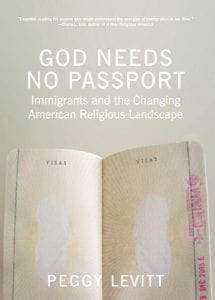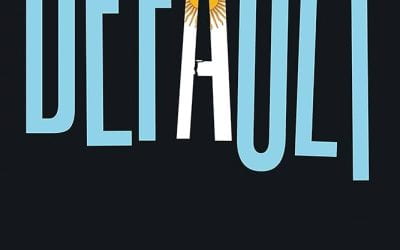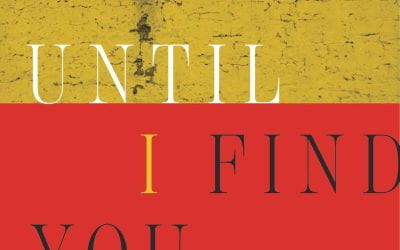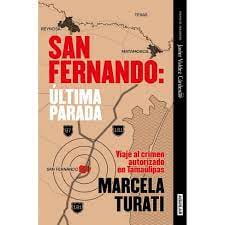A Review of God Needs No Passport: Immigrants and the Changing American Religious Landscape
Reshaping the U.S. Religious Landscape

God Needs No Passport: Immigrants and the Changing American Religious Landscape Peggy Levitt The New Press, New York and London, 2007, 270 pages.
For a practicing Buddhist, my first Mass attendance at St. Ambrose two years ago was a memorable event. I had spent the earlier part of the day visiting Buddhist temples with Diana L. Eck, Harvard professor of comparative religion and Indian studies and director of the Pluralism Project. At the end of our trip, we ventured into St. Ambrose—a stone’s throw from Luc Hoa temple in the bustling Fields Corner neighborhood, home to Boston’s largest concentration of Vietnamese refugees. A Catholic church that served generations of Irish Americans since its initial opening in 1914, St. Ambrose was filled with hundreds of Vietnamese Catholics on that Sunday afternoon. In his sermon, the pastor switched flawlessly between English and Vietnamese to simultaneously address the first-generation immigrants about the need to contribute to relief efforts to flood victims in Central Vietnam and their U.S.-born children about the importance of maintaining Vietnamese cultural values. It was there and then that I first glimpsed the important ways in which immigration is reshaping the U.S. religious landscape and how religious practices are rarely confined to nation-state boundaries.
Months later, I would learn that St. Ambrose is also home to a sizable Latino congregation which holds its own Spanish-language Mass every Sunday. In a nutshell, what I experienced at St. Ambrose mirrors what is happening in communities across the country as the United States incorporates its most recent wave of immigrants, a swell that began in 1965. At the dawn of the 21st century, immigrants and their U.S.-born children comprise about a quarter of the population of the United States. And most of them are here to stay. At the same time, increasing globalization, technological advances and ease of travel have made it easier than ever before for immigrants to lead transnational lives (to actively maintain social ties and participate in social lives both in their home countries and the United States). In light of these changes, scholars like Samuel Huntington have questioned contemporary immigrants’ desire and willingness to assimilate into American life. Drawing upon original empirical data, God Needs No Passport offers fresh and important insights that would inform our national debate on immigration, on the role of religion in public life and on the changing nature of social life in a more interconnected global world.
In this ground-breaking work, Peggy Levitt provides the first comparative study of transnational lives among four immigrant groups in Boston—Brazilian, Indian, Irish and Pakistani. Levitt suggests that our conventional wisdom about the migration process as one in which immigrants uproot ties from home communities and transplant them onto new soil in the United States is no longer in keeping with the changing realities of immigrant lives. She argues that adopting a transnational lens broadens our understanding of the contemporary immigrant experience. In other words, immigrants are constantly re-negotiating their boundaries of belonging and many do keep their feet in both home and host societies. In particular, religion provides fertile grounds to investigate these transnational processes, as the scope of influence of major religious traditions regularly span across nation-state boundaries.
In addition to a prologue and a conclusion, the book consists of six chapters that build tightly on each other. Levitt provides vivid descriptions of her respondents’ four home communities and explores the myriad ways in which these immigrants simultaneously live across nation-state borders. She takes us with her on adventures to remote corners of the globe from Valadares, Brazil, to Inishowen Island, Ireland, in an effort to connect the human dots between these far-flung places and Boston—her main fieldwork site. From the lobbies of the Sheraton hotel in Karachi, Pakistan, where she met the cosmopolitan Wasim to the living quarters of the faithful Mahendra in Vasna, India, Levitt delves into the lives of her respondents in a genuine effort to understand how they make sense of their transnational existence and the multifaceted ways in which faith plays a part in their daily life.
Drawing upon ten years of original research, God Needs No Passport is impressive in its scope and primarily relies on in-depth interviews with hundreds of respondents from three major religious traditions—Christianity, Hinduism and Islam. To fully grasp the fluidity of social lives across nation-state borders, Levitt also spent significant time conducting participant observation with these immigrant communities both in Boston and in their home countries. Through the voices of her respondents—Protestant Valadarenses, Hindu Gujaratis, Muslim Karachiites and Catholic Inishoweners, Levitt weaves together a fascinating tapestry of immigrant lives and their religious practices.
On the ground, the transnational reality that Levitt documents is multifaceted and quite fascinating. Among the first-generation Brazilians that Levitt spoke to in Framingham, most maintain active ties with families and friends in the sending community, call home and send remittances on a regular basis, keep track of major news development in and make occasional visits to Brazil. In Governador Valadares, families with relatives in the United States eagerly tune into the weekly religious program on their local television channel, which routinely features the Portuguese-language Mass from St. Joseph’s Church in Somerville, in the hope of getting a glimpse of their loved ones who might be in attendance. These are but a few examples that illustrate the myriad ways in which sending communities in Brazil are closely linked to receiving communities in Boston.
From public religious ceremonies in New York to private iftars in Boston, Levitt’s conversations with immigrants suggest that many see themselves as religious global citizens or “members of communities of faith composed of fellow believers around the world” (p.83). Like legal citizenship, religious citizenship comes with its own set of benefits (i.e. providing extended networks of social support) and responsibilities (i.e. creating additional demands on immigrants’ resources). Unlike legal citizenship, religious citizenship cannot be confined within nation-state boundaries. More importantly, these global citizens of faith are embedded within religious institutions that have become increasingly connected to each other. For example, the Vatican not only serves as the administrative capital of Catholicism but also profoundly connects the ideas, values and practices in this faith tradition from one locale to another.
In the end, the spectrum of faith that Levitt finds among her respondents is dazzling. What is more significant is the fact that most people told Levitt in no uncertain terms that their faith does matter to them. At the same time, they must grapple with either discrepancies between their personal interpretation of their faith and that of others from the same faith or contradictions between their own faith and that of other religious traditions. In drawing out these internal inconsistencies, Levitt not only highlights the changing nature of faith in contemporary immigrant America, but also brings attention to the fact that religious syncretism, both within and between faiths, is now the norm rather than the exception among her respondents. For them, to be an American not only implies a tolerant stance towards other pluralistic traditions but also requires active engagement with those from a different faith.
In the final chapter, Levitt explores the relationship between religion and politics. Contrary to popular perceptions, most immigrants wholeheartedly embrace American culture and civic life. Participation in their religious institutions not only provides immigrants with an anchoring point for their culture and identity but also helps them cultivate important civic skills. In other words, the same set of religious institutions play a crucial role both in the political incorporation of contemporary immigrants here in the U.S. and in the maintenance of immigrant social ties to their home countries. As Levitt’s respondents quickly point out, these two processes are hardly at odds with each other and often occur simultaneously.
Ultimately, would these transnational connections facilitate or hinder incorporation into American society among subsequent immigrant generations? As the experience of European immigrants who arrived a century ago would indicate, complete assimilation into American life among these earlier groups was a multi-generational process. More importantly, transnational involvements tended to decrease with each immigrant generation. Looking forward, one key question that remains unanswered is whether or not these transnational ties will continue to persist into the second-generation—the U.S-born children of immigrants. To her credit, Levitt also interviewed almost a hundred second-generation respondents from these four ethnic groups whose perspectives did inform her study, though she decided that the relatively small number did not warrant their inclusion in this book.
God Needs No Passport is as much about how Boston is intimately connected to Governador Valadares of Brazil and Gujarat State of India as it is about how the United States is closely connected to the rest of the world, simply by virtue of it being a nation of immigrants. Levitt targets first and foremost a general audience, though academic researchers should find the detailed footnotes and references very informative. The book is well-written and very engaging throughout, filled with stories that vividly illustrate the enduring significance of religion in contemporary life. In fact, one cannot help but admire Levitt’s sensitivity as she recounts her immigrant respondents’ experiences, perspectives and struggles. Furthermore, Levitt’s optimism about the future of America is refreshing. While acknowledging that important differences do exist among individuals from various faiths, Levitt also points out that these individuals are also actively reaching out towards each other across these divisions. And that active sense of pluralist engagement is at the core of a new religious America—a nation that is always in the making.
Ted Macdonald is a Lecturer in Social Studies and Faculty Affiliate at DRCLAS, Harvard University. He has worked directly on Latin American indigenous rights issues and cases since 1980. Currently and in collaboration with Kichwa Indian community leaders, he is preparing an ethnographic history of territorial rights and self-determination in the Ecuadorian Amazon.
Related Articles
A Review of Default: The Landmark Court Battle over Argentina’s $100 Billion Debt Restructuring
In February 2019, I found myself serving as the special attorney general for the then newly recognized interim government of Venezuela, tasked with addressing more than 50 claims before the U.S. courts stemming from the $140 billion debt inherited from Hugo Chávez and Nicolás Maduro.
A Review of Until I Find You: Disappeared Children and Coercive Adoptions in Guatemala
A student in my “Introduction to Cultural Anthropology” course at the University of Delaware approached me several weeks ago, after hearing about my long-term research in Guatemalan communities, to tell me that they were born there, in Guatemala.
A Review of San Fernando: Última Parada, Viaje al crimen autorizado en Tamaulipas
One of Mexico’s best investigative journalists, Marcela Turati, takes readers to terrorized and traumatized San Fernando, a town known for dozens of mass graves, and exposes the depths of criminal brutality and official corruption that hid the bodies and the truth for years.




